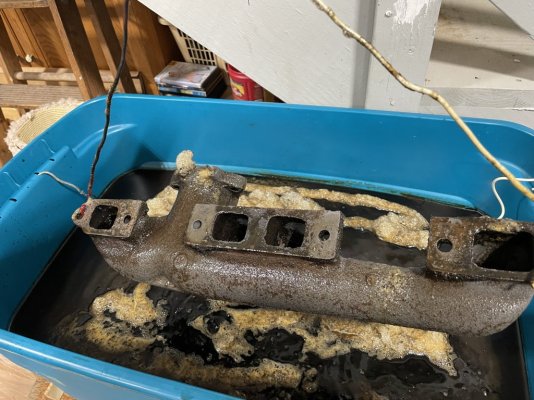Engine block and components update:
The parts were successful separate and the 413 has been bored .030 over. The rest of the block looks good and this is not the final hot tanking or cleaning.





The crankshaft, though a little discolored because of moisture, is usable according to the shop. So good news so far.
The replacement parts are being sourced.



The parts were successful separate and the 413 has been bored .030 over. The rest of the block looks good and this is not the final hot tanking or cleaning.
The crankshaft, though a little discolored because of moisture, is usable according to the shop. So good news so far.
The replacement parts are being sourced.



















